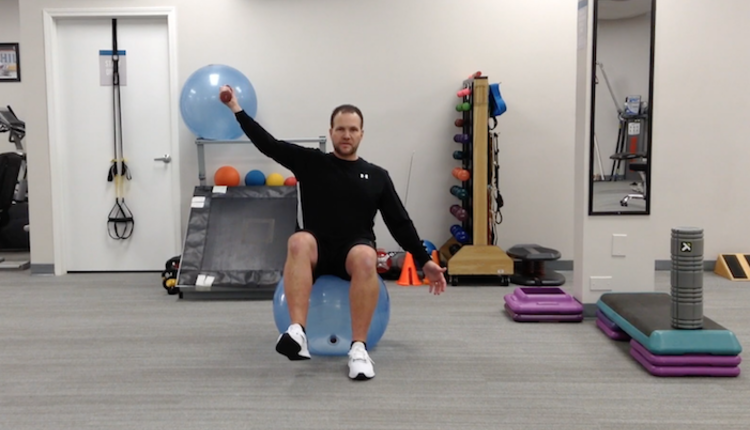There are times aggressive circuit training programs are perceived as “the best course of action” by those who are overweight, out-of-shape or limited by inflammatory concerns; and in those cases injury is not only possible, it’s likely. There are times extreme deprivation, carb-omission or reliance upon appetite suppression are believed to be “the best way” for those seeking fat reduction; and in those cases metabolic compromise is not only possible, it’s likely.
The word “appropriate” is a vitally important word in our field, especially when our society is filled with well-intentioned but under-informed consumers happy to spread whatever word they believe is “best.” Let’s consider that word. Best.
Best is often perceived as “fastest.” In a moment of confrontation with a mirror, the human psyche is able to summon up the emotion of disgust, and in that state of emotion the desire to get rid of excess fat becomes fiery. The mind wants an outcome for the body, and it wants it “now.” In that a Google search for “fastest way to lose weight” is guaranteed to pull up extreme options, many far from appropriate.
Sometimes best is perceived as “easiest.” You’ve no doubt run into the fitness-wanter who qualifies the desire with “other than exercise and diet…” or “what else can I do?” or “what supplement…?”
Worst of all, best may be perceived as “the one I saw on Facebook,” or “the one I heard about on the radio,” and although consumers see and hear advertising thousands of times each day, advertisers have become highly sophisticated in penetrating any wall of sensibility, driving beyond rational thought to create impulse.
We have to redefine best.
Let’s start by adding a few words: “Best for the client right now.”
Years ago, when in interviews I was asked, “what is the most important thing you’d want to say to personal trainers?” I had two answers. One was, “Treat every client as the most important person in the world,” and second, “Deliver far more value than anyone expects.” Those still hold true, but in a world where people are subjected to overwhelm, where there are more purported solutions than ever and where a bit at a time our population moves away from health creating greater levels of desperation, I feel inclined to add a third:
“Meet the client where the client is.”
The challenge becomes one of exploration and investigation. How do you know where the client is? We were taught to rely upon a fitness assessment, and that certainly helps, but in my experience most trainers view the assessment as the establishment of a baseline. As a snapshot to be used for comparison in weeks or months to evidence results. Although some will use a balance or postural assessment to pursue exercises aimed at correcting muscular imbalances, overall the information we acquire from the standard assessment is only a piece of the determination of “where the client is.”
The health questionnaire is of course valuable in assessing whether there are any contraindications, limiting conditions or historical episodes that might have created need for caution or modification, but there’s more.
The emotional assessment is perhaps the most telling. We are not psychologists, and are not credentialed to provide therapeutic emotional counseling, but we recognize that the emotional state of the client, the mindset, the outlook and the perspective are the key elements of decision-making and adherence.
In a short article I couldn’t begin to expound upon all of the elements of this process. I will tell you that watching and listening are the most important tools you have in this process. Often their body language will be more telling than their words. Other times the volume of times they use the words “can’t” and “but” show that their doubts are more prevalent than they may be ready to outwardly admit.
The biggest mistakes I see in failing to “meet the client where the client is” are in volume and intensity. The less-savvy trainer feels a need to “fill the hour” and in that keeps the client moving from exercise to exercise to complete a 60-minute session. The reality is, for a sedentary, once-but-no-longer-conditioned middle-aged person, a 15-minute session may be sufficient. In fact, it may be optimal. For those who feel obliged to “fill the hour” the rest of the hour can be filled valuably with conversation related to lifestyle shifts, finding time to make exercise a habit and beginning to align nutrition with desired outcome.
The reason we see fit people sticking to their programs and less-fit people falling into the sea of abandonment has everything to do with how the novice gets started. If the session is “intense” but not “comfortable” you are likely to lose the client. If the session is “professional” but there isn’t a sense of received instruction, the client may be short term.
So this raises a new question. If we are going to spend all of this time screening, asking, interacting conversationally and trying to figure out what is ‘’best” for each and every client, how do we get paid?
Here’s the answer: Charge appropriately. When you help the client understand that your exploration not only of the articulated goal, but of the true readiness of each individual is vital, you gain respect. When you take the time to not only ask, but listen to every response related to exercise history, medical concerns, fears and apprehensions, you gain connection. When you begin a program by helping the client see, hear, feel and understand precisely why this is “best” you become invaluable.
Don’t charge only for exercise time. Charge for YOUR time, and the assessment process is every bit as valuable (if not more) than the time you spend in physical movement patterns.
Here are a sample of important questions to ask, as the answers will begin to uncover mindset and readiness. I’ll provide a few here, and happily send a longer list to anyone who wants it.
1. What is the obstacle most likely to interrupt your commitment and progress?
2. Why MUST you make this life change now?
3. How will I know when you’re losing steam, losing interest or need redirection?
Meeting the client where the client is sounds so trite, so simplistic, but it very well may be the one factor that separates the “best” trainers from the rest of the pack.
To inquire regarding Phil’s “Betterment” courses for Fitness Professionals or to get a complete list of questions, email him at phil@philkaplan.com.










